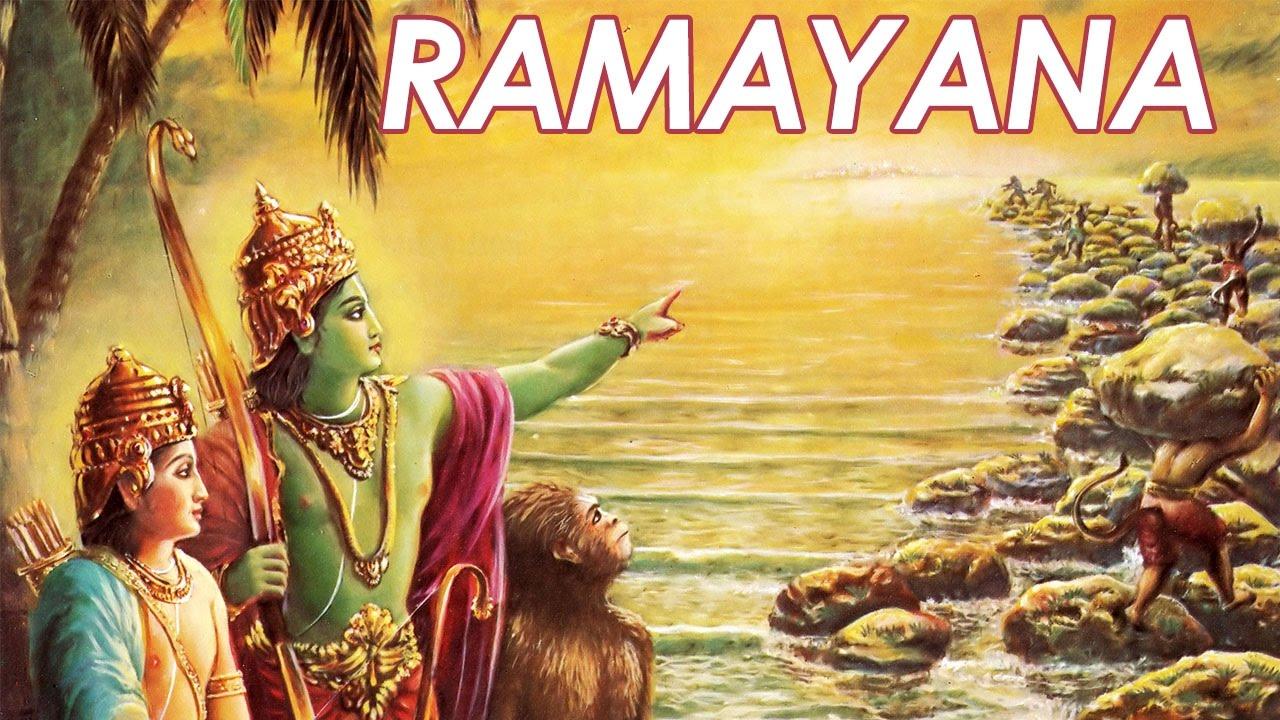Contents
Rāmāyana is one of the two major Sanskrit epics of ancient India and important text of Hinduism, the other being the Mahābhārata. The epic, traditionally ascribed to the Maharishi Valmiki, narrates the life of Rama, a legendary prince of Ayodhya city in the kingdom of Kosala.
The original version of Ramayana was written by Valmiki. It is an epic of 24,000 verses that depicts the journey of Rama, a prince of Ayodhya who belonged to Raghuvamsa (Solar dynasty). In Hinduism, Rama is the seventh incarnation of Lord Vishnu, one of the Trimurti (the Hindu holy trinity which includes Brahma and Shiva).
Ramayana
Ramacharitmanas by Tulsidas
The Ramacharitmanas, literally meaning “Lake of the Deeds of Rama,” is a celebrated epic poem composed by the 16th-century Indian poet Tulsidas. Written in the Awadhi language, it retells the story of Rama, a virtuous prince, from the ancient Sanskrit epic Ramayana. Considered a cornerstone of Hindu literature, the Ramacharitmanas is revered for its devotional beauty and its exploration of themes like duty, love, and good versus evil.pen_sparktunesharemore_vert
Versions of Ramayan
Regional Versions
Some noteworthy examples of these additional renderings of the Ramayana tale include:
North India
The “Ramacharitamanasa” written by Tulsidas in the 16th century is the Ramayana version popular in North India.
Jammu and Kashmir
The Kashmiri “Ramavatara Charita” was written in the 19th century.
Gujarat
The Tulsi-Krita Ramayana is a Gujarati adaptation of Tulisdas’ Ramayana in the 17th century by the poet Premanand Swami.
Maharashtra
The Marathi “Bhavartha Ramayana” was written by Eknath in the 16th century. There is also the reference to a Ramayana being translated into old Marathi during the 12th or 13th century.
Assam
The Assamese “Katha Ramayana” or “Kotha Ramayana” in the 15th century by Madhava Kandali.
Bengal
The Bengali “Krittivasi Ramayan” was written by poet Krittibas in the 15th century.
Orissa – The Oriya Dandi Ramayana or Jagamohan Ramayana was adapted by Balaram Das in the 16th century.
Andhra Pradesh
The “Sri Ranganatha Ramayanamu” was adapted by Buddha Reddy and is the Telugu version of the Ramayana. The “Molla Ramayanamu” was adapted by poetess Molla.
Karnataka
The Kannada versions of the Ramayana – the “Kumudendu Ramayana” (a Jain version), written in the 13th century, and the “Kumara-Valmiki Torave Ramayana,” written in the 16th century. There is another version titled “Ramachandra Charita Purana” written by Nagachandra during the 13th century.
Tamil Nadu
The Tamil “Kambaramayanam”, a popular version, was written by poet Kamban in the 12th century.
Click here to read Kamba Ramayanam in English.
Kerala
The Malayalam language “Adhyatma Ramayanam Kilipattu” was written by Thunchaththu Ezhuthachan in the 16th century.
Nepal
The Nepali language “Bhanubhakta Ramayan” was written by Bhanubhakta Acharya in the 19th century. The Nepal Bhasa “Siddhi Ramayan” was written by Siddhidas Mahaju in the 20th century.
Goa
Ramayanu was written by Krishnadasa Shama in the 15th century in Kardalipura, Goa in Konkani, manuscripts found in Portugal.
Kannada
Two prose works by Nanadalike Lakshminarayana (‘Muddanna’) entitled Adbhuta Ramayana (1895) and Ramaswamedham (1898).
Urdu
An Urdu language version is called the “Pothi Ramayana” and was written in 17th century.
Other versions
Champu Ramayan, Anand Rayaman, Mantra Ramayan, Girdhar Ramayan, Shree Ramayan Mangeri, Shree Rang Nath Ramayan, Bhaskar Ramayan, Gobind Ramayan written by Guru Gobind Singh and Radhey Shyam Ramayan
Gond Ramayani: The Gond version
Paumachariya: The Jaina version
Dasaratha Jakarta: The Buddhist version
Versions Outside India
The following are among the versions of the Ramayana that have emerged outside India:
- Cambodia: Reamker
- Thailand: Ramakien (The Thai version)
- Laos: Phra Lak Phra Lam
- Burma (Myanmar): Yama Zatdaw
- Malaysia: Hikayat Seri Rama
- Java, Indonesia: Kakawin Ramayana
- Philippines: Rajah Magandiri
- Sri Lanka: Janakiharan
Nepal
The Nepal Bhasa version called Siddhi Ramayan was written by Mahakavi Siddhidas Mahaju Amatya during the Nepal Bhasa renaissance era and the Khas language (later called “Nepali”) version of Bhanubhaktako Ramayan by Bhanubhakta Acharya marked the first epic written in the language.
Tibet
Ramayan is found in several manuscripts from Dunhuang.
Important Videos
Dating Hindu Epics Mahabharata & Ramayana – Debate between Dr. Koenraad Elst & Nilesh Nilkanth Oak

